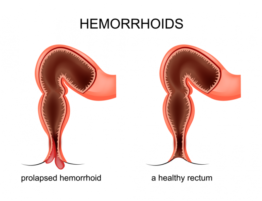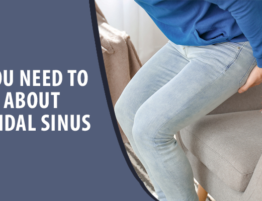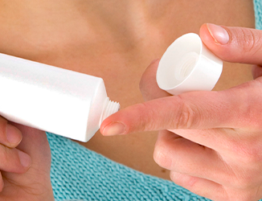
Piles are swellings that occur inside and around the anus and the anal canal. The anal canal is the last part of the large intestine. There are many small veins or blood vessels within the lining of the anal canal.These veins sometimes become wider and swollen with more blood than usual. The puffed-up veins and the overlying tissue might develop one or more small swellings called piles.
Different types of piles
- Internal piles – These form above a point 2-3 cm inside the anus in the upper part of the anal canal. They are usually painless as the upper anal canal has no pain nerve strings.
- External piles – External piles form below a point in the lower part of the anal canal. These are painful as the lower part of the anal canal has pain nerve fibers.
Causes of piles
- Constipation
- Pregnancy
- Ageing
- Hereditary factors
- Other causes like heavy lifting and persistent cough
An individual with piles may experience the following symptoms:
- A hard, probably painful lump may be felt around the anus. It may contain heavy blood. Piles that contain blood are called thrombosed external hemorrhoids.
- After passing a stool, a person with piles may practice the feeling that the bowels are still full.
- Bright red blood is visible after a bowel movement.
- The area around the anus is itchy, red, and sore.
- Pain occurs during the passing of a stool.
You should consult doctors for piles treatment, when you face the above symptoms.
Treatment of piles
- 1. Avoid constipation and straining at the toilet – You should try to keep the stools soft and do not strain on the toilet. For this, eat plenty of fiber, drink lots of water, have fiber supplements like ispaghula, methylcellulose, bran or sterculia. You should avoid painkillers that contain codeine which is the root cause of constipation. You must go to the toilet as soon as you feel the need for it.
- Use ointments, creams and suppositories – A bland smooth ointment which is of anesthetic nature can ease the discomfort. Sometimes, doctors advise steroids for treating piles if inflammation is there around the piles.
- Banding treatment – It is usually done by a surgeon for some kinds of piles. Banding of internal piles is generally painless. This method can be used to treat up to three piles. Piles are less likely to comeback after using this method.
- Other options – Some options are – Injection sclerotherapy, infrared coagulation/photocoagulation, diathermy and electrotherapy, traditional operation, stapled haemorrhoidopexy and Haemorrhoidal artery ligation. These are some options for piles treatment in extreme cases.
When it comes to providing right treatment Dr. Niket Shah is a leading piles doctor in Ahmedabad. Shah Piles Fistula Hospital was set up on the 3rd of January, 1982. Since the day the father-son duo; Dr. Devendra k shah and Dr. Niket Devendra shah has been providing the society with their capabilities and extraordinary vision in the field of Proctology.








